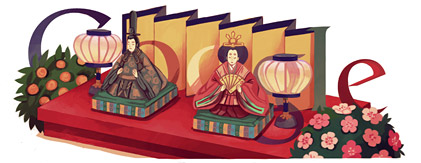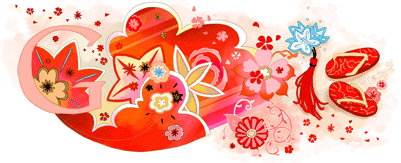One of our county's favorite holiday events is a large arts and crafts fair, Hum Arts, held at the local Fairgrounds. The fair features live music, good food and four exhibit halls filled with beautiful hand-crafted works, just in time for Christmas. Or Hannukah. Or Saturnalia. The fair has been held for so long (I think we've missed going only once or twice in its twenty-plus year tenure) and, as a shopper, I know just where to find particular artists: The garlic braid wreath people are in the small hall next to the grandstand. The sweet, elderly couple selling roasted nuts are at the back of another smallish building on the other side of the grandstand. Several friends and acquaintances have booths in the big hall, selling paintings, prints, tile work, painted silks and pottery. Over the years, we have collected work from several local pottery artists who set up their booths in this particular hall.
I have to admit to a certain acquisitiveness when it comes to vases and bowls, perhaps because they're versatile and widely available in a variety of shapes and materials (we recently purchased a bowl at a retail store that was clearly a product of mass production and intended to be used as dinnerware; some of my favorite vases are thrift shop finds). And although I enjoy purchasing pottery from galleries, thrift stores and tea shops, buying directly from the artist -- either at a craft fair or a studio -- gives us a unique opportunity to connect through the artist to the individual work of art. Recently, this relationship provided us with a fascinating lesson in pottery and the Way of Tea.
Those who study Cha-no-yu have been taught that during tea whisk inspection, or chasen toshi, the bamboo whisk is dropped on the rim of the bowl from a very short distance (a centimeter or less) which produces a clinking sound. As the whisk is raised, turned and inspected, it is dropped three times at the beginning of the ceremony. We learned this as, "Three sounds, two inspections." (As the ceremony ends, only two sounds are made.) Each type of pottery makes a characteristic sound -- for instance, porcelain can produce a high, clear ringing sound. We're instructed to never drop the whisk on a raku bowl, however, since the pottery is porous, fragile and easily chipped.
It was at this year's Hum Arts fair that Laura purchased a chawan from one of these local pottery artists: a rich, red-brown wood-fired bowl with a classic straight-sided shape and inviting texture. Naturally, she wanted to use it during practice the following week. I can hardly find the words to describe our reaction to the sound the bowl made during chasen toshi: Surpirse? Amazement? Fear? The sound it made was not a clear ring or high-pitched "tink" as we're used to hearing in other high-fired pottery, it was more of a "tank" or "thunk." Laura froze at that first sound, and we looked about at each other, eyes wide, silently questioning whether she should allow the whisk to make that kind of contact with the rim of her new tea bowl. Did we misunderstand the firing of this bowl? Was it indeed "high-fired" pottery? Or was it more like raku? Harvey-sensei contacted the artist with our questions that night after practice. As we're occasionally in contact with him, I expected that we'd get a reply but what followed was beyond our expectation:
"Raku bowls are earthenware, which is a low-temperature clay, and it is fired and cooled very fast. The result is a ceramic that is not very dense, hence its relatively low thermal conductivity compared to high-fired wares -- easy to hold when containing hot liquid. In the case of raku ware, the lack of density is the characteristic responsible for the sound when struck. During the firing of earthenware clays, elements that melt basically glue the other bits together, which results in a certain degree of strength, but nowhere near that of high-fired clays -- and the vitrification (melted stuff) is brittle and therefore easy to crack and chip.
"During the firing of stoneware and porcelain, the silica in the clay forms cristobalite crystals, which interlock and give the ceramic a much greater strength. The interlocking crystals are structurally similar to many rocks and minerals, and so the name stoneware is descriptive. Ever higher temperatures do not necessarily mean greater durability, however. As clays are fired to the upper ends of their normal firing range they become more and more vitrified, more glass-like. If high-fire clays were to be put into a very high temperature industrial furnace, they could eventually be melted into glass, and glass is quite strong but not very resistant to shock.
"All of my work is high-fired stoneware and porcelain, and it is fired into the hotter end of its normal firing range. Compared to industrially-made dinnerware that you would find in a department store, for example, my pottery is robust and durable. It chips less readily than most commercial dinnerware. I have microwaved food in my bowls for many years and have never yet had one crack, so my pots consistently demonstrate a very good resistance to thermal shock. However, I do not put my very favorite pieces in the microwave because I do perceive a potential for risk -- I have never done any empirical testing on the limits of my pots to thermal shock. Also, of course, if a thin rim gets knocked against something breakage is possible. The potters' perspective here is that people break pots in normal everyday life, and then we get to make more.
"As to whether a pot makes a ringing clink or a duller clunk, several factors are involved. The composition of the clay, the temperature of firing, and the form (shape of pot and wall thickness) all contribute to the sonic qualities of the pot when struck. I personally enjoy pots that have bell-like qualities, and I flick my fingernail against the rims of all of my pots because I enjoy the sound and I am curious about the differences. The sonic nature of Laura's teabowl does not indicate the structural characteristics of raku ware, rather something that derives from the combination of the various factors just mentioned. I strongly doubt that dropping a bamboo whisk into the bowl would crack the clay structurally. I do not remember whether the bowl that she bought is the one with splashes of melted ash drips in it. If it is, I would caution you folks that those drips are glass-like, and are therefore more brittle than the bowl in general. [We] have quite a few cups and bowls with ash drips in everyday use, including the microwave, pouring in of boiling water, etc, and this normal use has had no negative effect on the drips -- but we have never dropped anything into our pottery.
"If you are curious about the durability of raku ware compared to stoneware there is an easy test. At a second-hand shop buy any really cheap stoneware bowl (50 cents?) and an earthenware bowl (any Mexican or Italian painted pot will be earthenware) of similar thickness. Then drop a ball bearing into each one from the same height, gradually increasing the height with each drop until they break. The results should give you useful information regarding whisk-dropping into different types of pots."
My next trip to a thrift store will be to find a cheap stoneware bowl instead of a vase.


















































